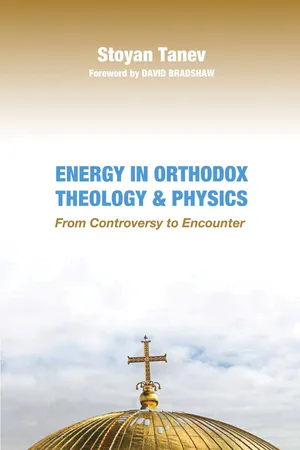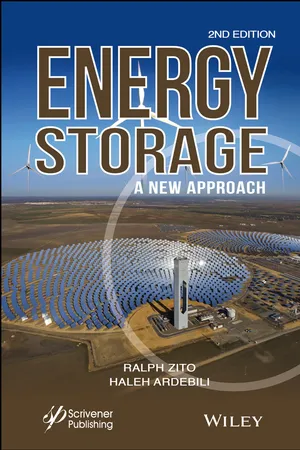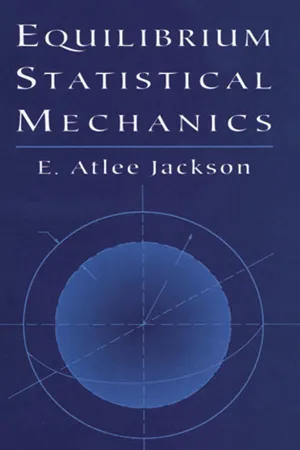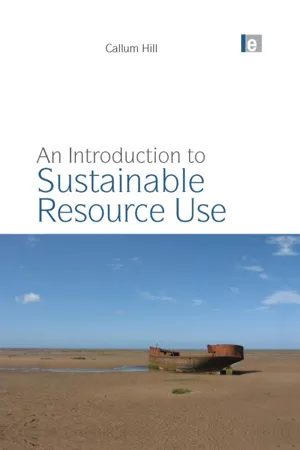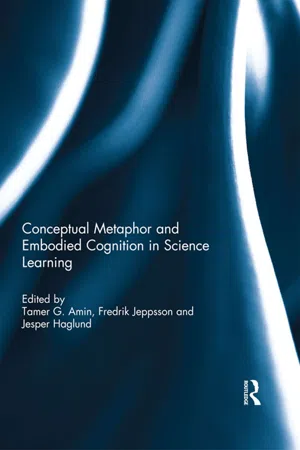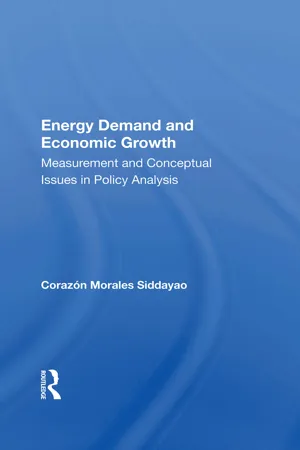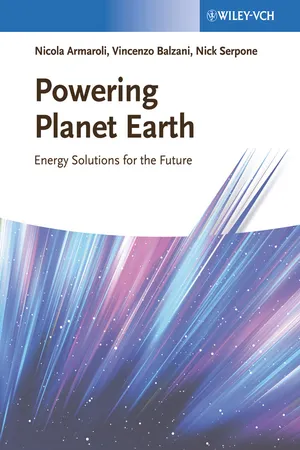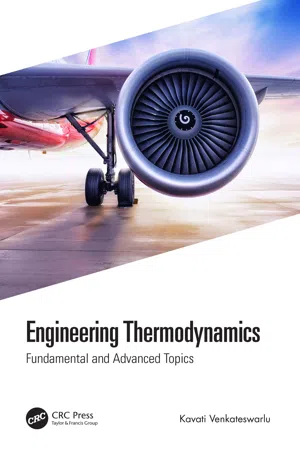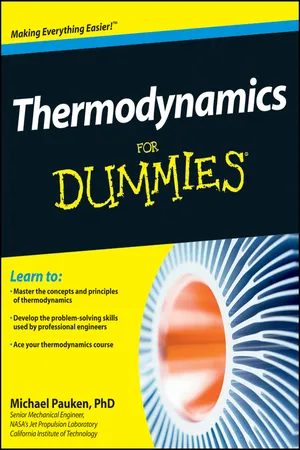Physics
Theoretical Energy
Theoretical energy refers to the energy associated with an object or system based on theoretical principles and calculations rather than direct measurements. It is often used in theoretical physics to make predictions and understand the behavior of physical systems. Theoretical energy can encompass various forms of energy, such as potential energy, kinetic energy, and other types of energy within the framework of theoretical models.
Written by Perlego with AI-assistance
Related key terms
Related key terms
1 of 4
Related key terms
1 of 3
9 Key excerpts on "Theoretical Energy"
- eBook - ePub
Energy in Orthodox Theology and Physics
From Controversy to Encounter
- Tanev(Author)
- 2017(Publication Date)
- Pickwick Publications(Publisher)
306From visible to invisibleHistorically the concept of kinetic energy was introduced first. The introduction of potential energy provided continuity to the idea of energy in general, since its change was associated with the work done on a body against a naturally present external force. Its relevance to the development of physics was found to be critically important:The concept of kinetic energy, as it stands, is a derivative concept since it is directly definable in terms of observables, namely mass and velocity. To this extent its usefulness is limited, and it affords no deeper understanding of the nature of mechanical systems; its logical distance from observation is too slight. But the value and significance of the concept are immeasurably increased, both for mechanics and as it turns out for physical science as a whole, by the introduction of the additional concept of potential energy. This move at one stroke places energy among the most important of physical concepts. The new notion of energy thus created, represents a considerable conceptual sophistication of the old one; its logical distance from observation is now very much greater, and the concept casts its net more widely.307It is, therefore, the logical distance from observation that provided the concept of energy its metaphysical relevance. It is the shift from the description of the visible properties of physical objects and systems to the manifestation of their invisible ones that makes it universally meaningful.Energy and fieldsThe relevance of the concept of potential energy is inherently associated with the emergence of the field concept. To clarify what a field is, we could use an example from electrostatics—the part of physics dealing with electrical charges, fields, and their interactions. The concept of electrical charge is fundamental and cannot be described in simpler, more basic concepts. In the words of Eugene Hecht: “We know it by what it does and not by what it is—if you like, it is what it does, and that’s that.”308 - eBook - ePub
Energy Storage
A New Approach
- Ralph Zito, Haleh Ardebili(Authors)
- 2019(Publication Date)
- Wiley-Scrivener(Publisher)
As far as we know, consistent with our observations, energy cannot be created or destroyed. We will ignore, in this book, the processes wherein energy and matter are equivalent, i.e., that matter can be transformed into energy and vice versa because all the phenomena associated with our lives do not occur at the atomic nuclear level. The availability of energy to do work can and does change. We can only transform energy from one of its two forms into the other, when possible, to suit our practical purposes, such as from kinetic energy to potential energy and back to kinetic. Ultimately, all these transformations resolve in an increase of entropy (disorder) in the universe and, therefore, an increase in world temperature. When all things are finally at the same temperature, there is no more useful energy.Another penetrating and early analysis of the subjects of energy (kinetic and potential), mass, and force was put forth by James Clerk Maxwell, author of the electromagnetic theory of radiation, among other profound and basic contributions to physics. In his preface to Matter and Motion, he states:Physical science, which up to the end of the eighteenth century had been fully occupied in forming a conception of natural phenomena as the result of forces acting between one body and another, has now fairly entered on the next stage of progress – that in which the energy of a material system is conceived as determined by the configuration and motion of that system, and in which the ideas of configuration, motion, and force are generalized to the utmost extent warranted by their physical definitions. (1877)What is energy? It is not observable in the classical sense. Theoretical physicists have interminably debated its ability to be observed and have variously defined the concept over many years. First, it is necessary to identify or define what we mean by an “observable quantity.” Interestingly, there are few directly observable. The rest of these concepts, such as energy, momentum, temperature, etc., are inferred by various experiments and indirect observations. What we call momentum is calculated and seen as the force necessary to change the momentum of a body.We are using the word “observable” in a rather sophisticated sense. It is necessary to divorce our ideas of what we directly experience from those of theories intended to explain the process or sensation. Force, a push or pull, is a directly observable magnitude, as are the velocity of a body in motion, pressure, volume, length, temperature, and even quantity of heat. In reality, the subject of what is legitimately observable is highly debatable. Not only are the semantics of the subject in question, but we must also identify the level of primitiveness or experience of the individual making the observation. However, such quantities as entropy and enthalpy in thermodynamics are not directly observable. - eBook - ePub
- E. Atlee Jackson(Author)
- 2012(Publication Date)
- Dover Publications(Publisher)
models (simplified pictures) of atoms, molecules, gases, and solids will illustrate the various types of interactions between particles. Finally, we shall consider some of the important modifications of these classical models that are required by quantum mechanics.2. KINETIC AND POTENTIAL ENERGY
To begin with, let us consider a particle moving in space as it is described in classical mechanics. The position of the particle r (t ) = x (t )i + y (t )j + z (t )k [where (i, j, k ) are the unit vectors in the (x , y , z ) directions] generally varies in time and has a velocityIf the particle has a mass m, it is said to have a kinetic energy (sometimes called the translational energy )(1)If a force F acts on the particle, its velocity will change according to Newton’s law(2)If no force acts on the particle, then it follows from Equation (2) that v is independent of the time, and consequently the kinetic energy is also a constant. We can also see this from the fact that(3)which vanishes if F vanishes.Now the force that acts on the particle generally depends on the position of the particle r and sometimes also on the velocity (e.g., frictional forces, or the force on a charged particle moving in a magnetic field). If the force depends only on r and if it can be expressed in terms of the gradient of some function Φ - eBook - ePub
- Callum Hill(Author)
- 2012(Publication Date)
- Routledge(Publisher)
Energy is used to move things, to drive machinery, to provide heat and electricity, and to stay alive. Without energy there would be no change and time would not exist. But what exactly is it? For many years energy was seen as a mysterious force that acted upon matter and somehow gave it ‘life’ and it was given a name that reflected this idea, ‘vis viva’. Even now, much misunderstanding exists; it is common to see the words ‘energy’ and ‘power’ used interchangeably although they mean different things, or references to energy ‘consumption’, whereas energy is always conserved. There is no doubt that something is being consumed when we use energy and we shall examine later in this chapter what this something is.To quote the Nobel Prize-winning physicist Richard Feynman, ‘It is important to realize that in physics today, we have no knowledge of what energy is.’ But if we are not exactly sure what energy is, we certainly know what it does, we can describe how it behaves, what properties it exhibits and how it interacts with matter.A standard textbook definition of energy is ‘energy represents the capacity to do work’. Although true, this is not necessarily very helpful when trying to get a mental picture of energy. Perhaps a better definition is the rather dry, but accurate, state- ment ‘energy has the ability to bring about transformation in a system’. The system represents the particular part of the universe which is the subject of study, and this might be an engine, a power station, a tree or a recycling process (we’ll look at this a little later). Energy transformation causes change, which is why energy and time are interwoven.Let us return for a moment to the narrower definition of energy as the ‘capacity to do work’. Work is what happens when something moves (work = force × distance). Work involves the organized motion of assemblies of atoms or molecules.A bicycle is clearly an organized assembly of molecules and atoms, and by pedal- ling this assembly, motion will result. The bicycle has been given kinetic energy by the contraction and extension of leg muscles whose chemical energy is derived ulti- mately from sunlight. Sunlight is converted into the movement of a bicycle through the mechanics of legs (plus a few other conversions along the way). - Tamer Amin, Fredrik Jeppsson, Jesper Haglund, Tamer G Amin, Fredrik Jeppsson, Jesper Haglund(Authors)
- 2018(Publication Date)
- Routledge(Publisher)
coherent conceptual metaphors for energy. The value in each conceptual metaphor is that it helps to explain the role of energy in its application to a particular context; energy cannot be defined out of context or outside of a system.It is important to recognize that there are limitations to using substance metaphors for energy (Amin, 2009; Scherr et al., 2012). The primary one being that it is difficult to conceptualize negative energy as a substance, as is the case for electrical or chemical potential energy in bound systems. For this example, some have pointed out that in this context it is more fruitful to use the Location Event Structure, as defined by Lakoff and Johnson (1999), in which energy is described as a physical location (e.g. up or down) rather than a tangible substance (Dreyfus et al., 2014).To summarize the literature, there is no consensus as to which definition (or metaphor) of energy is best. One consequence of this is that students receive mixed messages during instruction, and the definitions of energy are often at odds with each other. By documenting the different conceptual metaphors students use to describe energy, we can begin to understand the effect that these different conceptualizations have on student learning.MethodsParticipants and SettingThe participants in this study were enrolled in a university two-semester interdisciplinary general science course for non-science majors. Content was covered in an integrated manner using a Science, Technology & Society approach. A student who completed the course was expected to be able to read, understand, and intelligently discuss science-related stories in the media. Topical units included issues such as human energy use, transportation, radiation, natural disasters, and space exploration (in the first semester). The fact that energy appeared throughout the course gave students multiple points of entry for understanding this complex concept, and provided a unique environment for research because the students were exposed to the various scientific meanings of the term within one course.- eBook - ePub
Energy Demand And Economic Growth
Measurement And Conceptual Issues In Policy Analysis
- Corazon M Siddayao(Author)
- 2021(Publication Date)
- Routledge(Publisher)
1 In fact, the term was intended to take account of the fact that heat and work are interchangeable. Although they are interchangeable, however, a given quantity of heat does not always yield the same quantity of work. Definitional problems thus arise principally because various energy forms have different capacities to do work. Several terms have been used to describe this condition; one of them is thermal efficiency. One might also refer to the problem as that of defining the level of effective energy. In addition, intertemporal considerations and interdependence within a system require recognition of the concept of embodied energy. These and other basic issues are summarized in this section.The most important definitional question concerning energy arises from the vagueness with which the term is used. In most current discussions on the "energy problem," the principal focus tends to be on the heat quality of energy. However, energy is also stored work. The heat it produces may be intense enough to emit light. Heat, light, motive force, and chemical change induced by, or resulting in, electricity are all manifestations of energy. The combustible sources of energy may be transformed into electricity. Mechanical energy and electricity may also be derived from the kinetic energy of a mass of water that moves from one level to another (e.g., a dam, river falls, tides, waves) or from a mass of air that moves from a higher to a lower pressure area. Heat may be produced through combustion or fission of a suitable fuel, compression of a suitable liquid or gaseous medium, from the capture of the sun's rays, from hot rocks below the surface of the earth, from the passage of electricity through an appropriate material, or from certain exothermic chemical processes.2Enthalpy, the heat content of a substance, H, is a thermodynamic property defined as the internal energy, E, plus the product of the pressure, P, multiplied by the volume, V, of that substance:H = E + PVIt contains the units of energy and is usually expressed in calories (or kilocalories) or in British thermal units (Btus).3 (See Appendix 1.1) The joule is the only energy unit recognized by the SystSme International d'Unites (SI ). It was first promulgated as the SI unit of energy in 1946 and then as the SI - eBook - ePub
Powering Planet Earth
Energy Solutions for the Future
- Nicola Armaroli, Vincenzo Balzani, Nick Serpone(Authors)
- 2012(Publication Date)
- Wiley-VCH(Publisher)
In the nineteenth century, men who laid the foundations of thermodynamics during the years of great technological advancement were mostly British, French and German. They were often driven by the desire to contribute to the development and technological supremacy of their country.Thermodynamic studies conducted in the second half of the 1800s led to the formulation of some basic laws, or principles, whose validity can be extended to all forms of energy. In other words, without realizing it, the thermodynamicists of that era went beyond their original ambition. They wanted to understand the operation of simple machines and in doing so managed to uncover some of the fundamental pillars that hold the universe together.The two principles of thermodynamics are so basic that often they are referred to simply as the First and Second Principle of Thermodynamics. Incidentally, the capital letters are not typographical errors. Before illustrating these Principles, it is useful to clarify briefly some of the concepts underlying these Principles, namely temperature and heat .Particles in Motion
Thermal energy (or heat ) is a manifestation of the ceaseless movement with which atoms are agitated – atoms are the submicroscopic particles that make up matter. As for temperature , we are all convinced that we know what it is: who has never used a thermometer? However, the concept of temperature is far less trivial than it seems at first. It is rigorously described according to the average kinetic energy of motion of the atoms.Here we shall limit ourselves to state simply that temperature is a property that defines the direction of the transfer of thermal energy from one system to another. Thermal energy (heat) tends to move from a system of higher temperature to a system of lower temperature . The process stops when the so-called thermal equilibrium is reached, at which point there is no longer transfer of heat energy between the two bodies (macroscopically speaking) since they are at the same temperature.The scale - eBook - ePub
Engineering Thermodynamics
Fundamental and Advanced Topics
- Kavati Venkateswarlu(Author)
- 2020(Publication Date)
- CRC Press(Publisher)
The total energy of a system can be divided into macroscopic and microscopic forms. The macroscopic form of energy is the energy a system possesses as a whole with respect to some reference point. Kinetic and potential energies are of the macroscopic form. The microscopic form, on the other hand, is concerned with the molecular structure of a system and molecular activity. The internal energy is the sum of all the microscopic forms of energy, which is indicated by U.The macroscopic form of energy caused by motion is called kinetic energy and it is influenced by gravity, electricity, magnetism, and so on. This type of energy is the energy possessed by a moving device. The kinetic energy is expressed aswhere m is mass in kg and V is the velocity of the system in m/s. In the case of a solid body rotating with an angular velocity ω, it is indicated byK E =(3.2)1 2mV 2i n k Jwhere I is the moment of inertia of the body.(3.3)1 2I ⋅ω 2The energy possessed by a system due to its elevation in the gravitational field is called the potential energy, which is expressed as PE = mgh, where g is the gravitational acceleration and h is the height or elevation of the center of gravity of a system with respect to some standard reference datum.The total energy consists of kinetic, potential, and internal energies only in the absence of magnetic, electric, and surface tension effects (which are considered in some special cases only). In such cases, the total energy is given byE =(3.4)+U ︸m i c r oK E + P E︸m a c r owhere U is the total internal energy,On a unit mass basis, it can be expressed asK E =, and PE = mgh.1 2mV 2e = u + k e + p e = u +(3.5)+ g hV 22For closed stationary systems in which there are no changes in kinetic and potential energies, the change in total energy is equal to the change in internal energy. Usually, a closed system is treated as stationary when its velocity and elevation with respect to a standard datum remain unchanged. Thus, for a closed stationary system - eBook - ePub
- Mike Pauken(Author)
- 2011(Publication Date)
- For Dummies(Publisher)
is one of the strongest forms of molecular energy because it’s associated with the nucleus of an atom. This energy form isn’t discussed in thermodynamics at this level, but at least you know it exists.Calculating total energy
The total amount of energy that a system contains includes both the macroscopic and microscopic forms of energy associated with it. The following equations for total energy sum up the kinetic, potential, and internal energies. The extensive form of the total energy of a system includes the mass of the system in each energy component. The intensive form is on a per unit mass basis.E = KE + PE + U = 1⁄2m · V 2 + m · g · z + m · u (extensive form)e = ke + pe + u = 1⁄2V 2 + g · z + u (intensive form)Nearly every thermodynamic analysis uses one of these two equations. You use them to determine the amount of energy that occurs in the form of work and heat for many thermodynamic processes. Because chemical and nuclear energy aren’t usually dealt with in introductory thermodynamics, these forms of energy are omitted from the equations calculating the total energy of a system.Enthalpy
Many thermodynamic processes involve a fluid flowing through a device and undergoing a change in internal energy. Any time a fluid flows into a system, it does work on the system, and any time a fluid flows out of a system, the system does work on the fluid. This occurs when hot water flows though an automobile radiator, for example. The work associated with the fluid flowing into or out of the system is represented by the product of the pressure (P ) and the volume (V ) of the fluid. This happens in so many situations that a new property, enthalpy (H ), is used to combine the change in internal energy with this flow work, to make calculations more convenient. Enthalpy is defined by the following equation: H = U + PV. The units for enthalpy are the same as those for internal energy. The units for the pressure-volume (PV ) product in the SI system are kilopascals-cubic meter (kPa · m3
Index pages curate the most relevant extracts from our library of academic textbooks. They’ve been created using an in-house natural language model (NLM), each adding context and meaning to key research topics.
Explore more topic indexes
Explore more topic indexes
1 of 6
Explore more topic indexes
1 of 4
